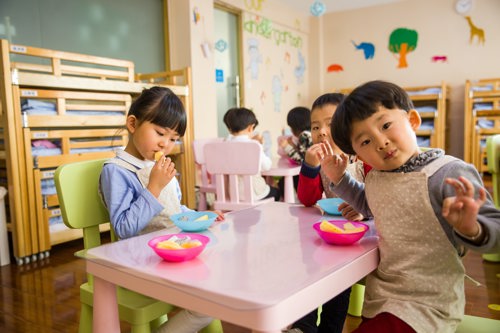
What are the most common causes of infection in childcare settings?
Absences in childcare are common, especially as the weather begins to change or the seasons shift suddenly. As more and more children get sick, they are likely unknowingly spreading infections throughout childcare facilities. So, cleanliness and infection control must be properly managed.
First and foremost, managing bacteria is a neverending task, and unfortunately, the national health and safety standards for cleanliness cannot control how infections spread across premises. But, as a childcare owner or manager, it is vital to do everything to keep children and their families safe.
Not only is it a great way to ensure everyone is happy and sickness free, but it can also boost the reputation of a childcare facility due to its esteemed cleanliness value.
Before locating the most effective ways to clean a space, it’s important to know where infections are coming from and how they can spread.
Here are just some of the ways germs are known to enter childcare facilities and how they can be better controlled:
Through the air
One of the most common ways for infection to spread is through other infected people. When a little one sneezes or coughs, they are letting out hundreds upon thousands of bacteria that can make others sick. Though it’s all well and good to tell children to place their hands in front, this is a concept they don’t always understand and may avoid doing, especially if a cough or sneeze comes unexpectedly.
It can be near impossible to avoid all instances of coughing or sneezing. When spotted, it’s always best to wipe the surrounding area with a Rubbermaid Microfibre Cloth and some disinfectant.
Through direct contact
Kids love to play, run around and have fun with one another. During this play, they are likely touching one another and their respective carers. Whether it’s a high five or a pat on the back, there are many instances where a sick or infected little one may accidentally pass on their germs to others.
Again, while germs can’t be completely eradicated in these situations, especially in high-volume daycares, encouraging all students to use a Rubbermaid Sanitising Station can reduce the risk of transmission and keep everyone smiling. If young ones don’t like the smell of sanitiser, some Moisturising Foam Soap and warm water will do an even better job. Just make sure they dry their hands before returning to play to avoid slips and falls.
Though indirect contact
There are numerous surfaces in childcare centres, whether it be a bench, bathroom appliance or a toy, kids are likely to touch a wide variety of surfaces as they learn and play. If they have previously touched a runny nose or coughed into their hand and then touched a surface, they have likely transmitted germs and harmful bacteria to this new surface.
When given the right humid conditions to grow, such as inside a toy box, these germs can fast spread. Wiping down all surfaces every two hours with a wet cloth and sanitiser will help limit the spread and keep germs at bay.
If carers notice a child touch their bodily fluids like saliva and then touch a surface, they can use a Rubbermaid Disposable Microfibre Cloth which picks up 99.9% of microbes from surfaces, and this can be used with approved disinfectants as per organisation protocols. This is a great, quick solution to keep surfaces clean in between detailed cleaning schedules.
Keeping kids safe across the whole country
With years of cleanliness experience behind us, Rubbermaid is passionate about keeping childcare centres clean and tidy to minimise the risk of infections. As the leading cleaning solution in hospitals and aged care, and a wide range of solutions on offer, we can assist you in achieving a higher level of clean in your childcare facility.
Discover the extensive cleaning and infection control range today.